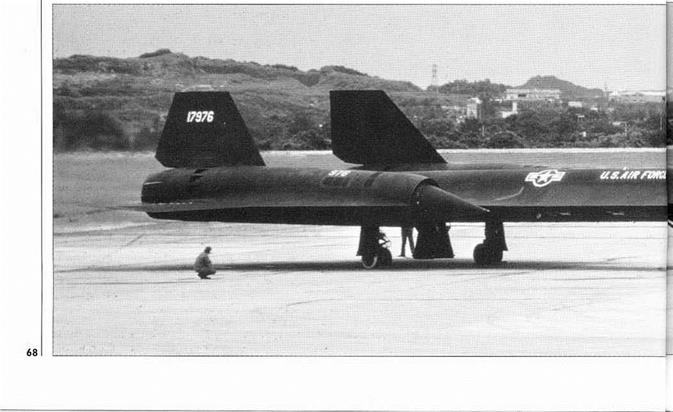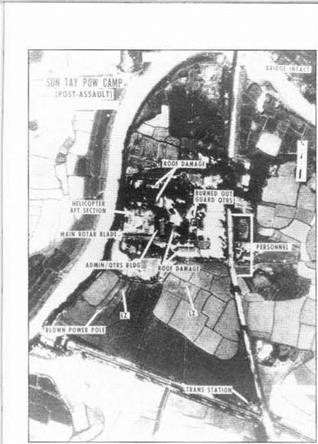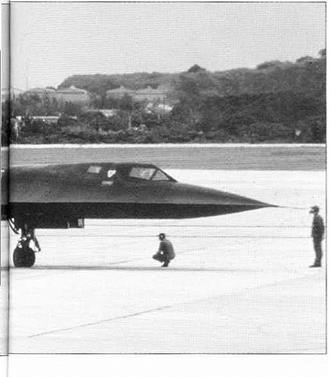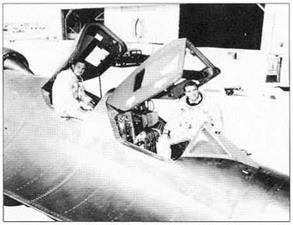Other Sorties
Although the vast majority of early Habu flights from Kadena were in support operations in Vietnam, this was not exclusively the case. On the night of 27 September 1971, Majs Bob Spencer and ‘Butch’ Sheffield flew ‘980 on a northerly track. US Intelligence had obtained details of the largest ever Soviet naval exercise to be held off Vladivostok, in the Sea of Japan; and the Habu was an ideal vehicle for stirring up the Soviet fleet’s defence systems. National security officials were especially interested in obtaining signal details relating to the Soviets’ new SA-5 (Gammon) SAM system.
As ‘980 bore down on the target area, dozens of Soviet radars were switched on and just short of entering Soviet airspace, the Habu was rolled into a full 35 degree banked turn, remaining throughout in international airspace. However, on approach to the collection area, Bob noted the right engine’s oil pressure was dropping. Clearing the
area, Bob discovered the reading had fallen to zero. He shut down the engine and was forced to descend and decelerate to subsonic speeds. Having stirred up a hornets nest, they were now sitting ducks for any Soviet fast jets sent up to intercept the oil-starved Habu. Worse still, at lower altitude they were subjected to strong headwinds which rapidly depleted their fuel supply. Butch calculated that recovery back to Kadena was impossible – instead they’d have to divert into South Korea.
The OL commander had been monitoring ‘980’s slow progress and as the Habu neared Korea, US listening posts reported the launch of several MiGs from
|
|

Above and below Majs Jerry O’Malley and RSO Ed Payne flew the first operational SR-71 sortie over North Vietnam in 17976 on Thursday 21 March 1968. (USAF/Lindsay Peacock)

![]()
 Pyongyang, North Korea. In response USAF F-102s were scrambled from a base near Hon Chew, South Korea and vectored into a position between the Habu and the MiGs. It was later established that the MiG launch was unconnected with the Habu’s descent and Bob recovered ‘980 into Taegu, South Korea, without further incident. In all their EMR ‘take’ had recorded emissions from 290 different radars, but the greatest prize was ‘capture’ of the much sought-after SA-5 signal characteristics.
Pyongyang, North Korea. In response USAF F-102s were scrambled from a base near Hon Chew, South Korea and vectored into a position between the Habu and the MiGs. It was later established that the MiG launch was unconnected with the Habu’s descent and Bob recovered ‘980 into Taegu, South Korea, without further incident. In all their EMR ‘take’ had recorded emissions from 290 different radars, but the greatest prize was ‘capture’ of the much sought-after SA-5 signal characteristics.
On 20 July 1972 while returning to Kadcna from an operational mission, Majs Denny Bush and Jimmy Fagg were caught shortly after touch down in ‘978 by excessive cross winds. Jettisoning the ’chute by the book, to prevent the aircraft from ‘weather-cocking’ sharply into wind, the extended roll-out caused the aircraft to roll off the end of the runway and in a twist of fate, they hit the concrete housing for emergency crash barriers. One of the main landing gear struts was badly damaged which in turn caused substantial additional damage. Both crew members were unhurt, but ‘978 was written off. The final SR-71 to be written off was lost on 21 April 1989. On that occasion one of the engine compressor discs disintegrated during Mach 3 flight, the debris severing one hydraulic system and damaging the other. Lt Col Dan House and Maj Blair Bozek decelerated and descended ‘974 down to 400kts and 10,000ft. When the remaining hydraulic system ran dry, both men safely ejected just a few hundred yards off the coast of Luzon and were picked up by Philippino fishermen. They were later collected by an HH-53 Super Jolly Green Giant and flown to Clark AFB.
OL-8 was redesignated OL RK on 30 October 1970, became OL KA on 26 October 1971 finally Detachment 1 or Det 1, of the 9th SRW in August 1974, a title it retained until deactivated in 1990. During 22 years of service, the unit flew missions to Vietnam, Laos, Cambodia, Thailand, North Korea, airspace off the USSR, China and four 11-hour return flights to the Persian Gulf, during the Iran/Iraq war.











